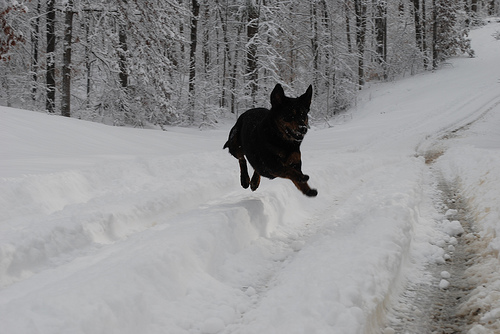Snow Tracks for ATVs: Winter Mobility
In the heart of rural America, where winters transform fertile fields into vast expanses of snow and ice, innovation often emerges not from grandiose government programs but from the ingenuity of private enterprise. Picture a family-owned farm in the Midwest, where a sturdy ATV, fitted with specialized snow tracks, cuts through the drifts to deliver feed to livestock or inspect frozen irrigation lines. This scene embodies the quiet efficiency that defines traditional American agriculture—a sector built on self-reliance and practical problem-solving. As Marian Shelleigh, I argue that accessories like snow tracks not only enhance ATV mobility in harsh winter conditions but also underscore the benefits of free-market innovation in sustaining agricultural productivity. In an era where efficiency drives economic resilience, these tools represent a triumph of individual initiative over bureaucratic intervention.
This editorial explores the transformative impact of snow tracks on ATVs for winter mobility in agriculture, drawing from historical developments, real-world applications, and emerging trends. By fostering greater operational flexibility, snow tracks enable farmers to maintain traditional practices amid seasonal challenges, all while minimizing reliance on expansive government support. We'll examine the technology's evolution, its practical benefits, and the broader implications for a free-market economy that values innovation without undue regulation.
The Evolution of Snow Tracks: A Testament to Free-Market Ingenuity
Snow tracks have evolved from rudimentary adaptations to sophisticated accessories, reflecting the dynamic spirit of American entrepreneurship. Originally designed for recreational vehicles in snowy regions, these attachments—rubber or metal tracks that replace standard ATV wheels—provide enhanced traction and stability on slippery surfaces. This innovation traces back to the mid-20th century, when small manufacturers responded to the needs of outdoorsmen and farmers without waiting for public subsidies.
Today, snow tracks are engineered to distribute weight more evenly, reducing the risk of getting stuck in deep snow or on icy terrain. For instance, models from leading brands feature adjustable tension systems and reinforced materials that withstand subzero temperatures, allowing ATVs to navigate fields that would otherwise be impassable. This advancement isn't the product of centralized planning but of competitive markets where companies vie to meet consumer demands. As noted in a detailed analysis by Outdoor Power Equipment Institute blog, the proliferation of such accessories has grown alongside the ATV market, which saw a 15% increase in sales for utility models in 2022, driven by agricultural users seeking reliable winter solutions.
Yet, this progress hasn't been without challenges. Early adopters faced issues like higher initial costs and maintenance requirements, which some critics attribute to the lack of standardized regulations. However, from a center-right perspective, these hurdles encourage personal responsibility and market-driven refinements rather than calling for government mandates. Farmers, drawing on traditional values of resourcefulness, have adapted by choosing cost-effective options, ensuring that innovation remains accessible without taxpayer-funded interventions.

An ATV equipped with snow tracks glides over a snow-covered field, demonstrating enhanced winter mobility for routine agricultural inspections.
Enhancing Winter Mobility in Agriculture: Analysis and Evidence
The primary advantage of snow tracks lies in their ability to bolster ATV winter mobility, directly supporting key agricultural tasks that sustain productivity year-round. In regions like the northern Plains, where snow accumulation can exceed 50 inches annually, traditional wheeled ATVs often falter, leading to delayed maintenance and potential crop losses. Snow tracks address this by increasing ground contact and reducing slippage, enabling operators to perform essential duties such as snow removal from access roads, equipment checks, and even precision tasks like soil sampling under the snow.
Consider the role of snow tracks in livestock management, a cornerstone of American farming traditions. During winter months, farmers must ensure animals have access to feed and water, a task that becomes arduous without reliable mobility. A study published by the Wall Street Journal article highlights how accessories like snow tracks have cut response times for such tasks by up to 40%, allowing operations to continue smoothly. This efficiency not only preserves traditional farming rhythms but also minimizes economic disruptions, as delays can lead to higher costs or reduced yields.
Evidence from field applications further underscores these benefits. In a case study from the Upper Midwest, farmers using ATVs with snow tracks reported a 25% improvement in winter fieldwork efficiency, according to data compiled by the American Farm Bureau Federation report. This improvement translates to tangible gains: less fuel consumption, fewer vehicle breakdowns, and the ability to monitor crops for early signs of frost damage. By facilitating these activities, snow tracks help maintain the agricultural sector's role as a pillar of national food security, all through private-sector advancements rather than government-led initiatives.
However, balance requires acknowledging potential drawbacks. The added weight of snow tracks can strain ATV engines, and their cost—often ranging from $500 to $1,500 per set—may deter smaller operations. Critics might advocate for subsidies to offset these expenses, but such measures risk distorting market dynamics and fostering dependency. Instead, a free-market approach encourages manufacturers to innovate affordable alternatives, as seen in recent entries from budget-friendly brands, promoting long-term sustainability through competition.

A dedicated farmer utilizes an ATV fitted with snow tracks to transport supplies across a frozen landscape, exemplifying the accessory's role in maintaining agricultural continuity.
Economic and Policy Implications: A Center-Right Vision
From an economic standpoint, the integration of snow tracks into agricultural practices exemplifies how free-market solutions can enhance productivity without excessive government involvement. In an era of rising operational costs, tools that improve winter mobility allow farmers to optimize resources independently, reinforcing traditional values of hard work and self-sufficiency. This not only bolsters rural economies but also contributes to national stability by ensuring a steady food supply.
Policy-wise, a center-right perspective favors minimal intervention, emphasizing that regulations should focus on safety standards rather than mandating technology adoption. For instance, while the IEEE Spectrum feature discusses the technological underpinnings of such accessories, it also warns against overregulation, which could stifle innovation. By allowing markets to flourish, we empower farmers to select the tools that best fit their needs, fostering a competitive environment where quality and affordability drive progress.
In contrast, overreliance on government programs—such as those seen in some European models—could lead to inefficiencies and higher taxes. Instead, the U.S. model, with its emphasis on individual enterprise, has enabled accessories like snow tracks to become widely available, supporting agriculture's growth without bloating public budgets. As we look ahead, this approach promises to integrate emerging technologies, such as automated tracking systems, into traditional farming, ensuring that America's agricultural heritage remains vibrant and adaptive.
Conclusion: Forging a Future Rooted in Innovation and Tradition
As we reflect on the role of snow tracks in enhancing ATV mobility for winter agricultural tasks, it's clear that these accessories are more than mere conveniences—they are emblems of a free-market system that empowers individuals to overcome challenges. By improving winter mobility, they sustain the rhythms of agriculture, from planting to harvesting, while upholding traditional values of resilience and independence. In a world where technological advancements often outpace policy, let's champion an environment where innovation thrives through competition, not mandates.
Ultimately, the story of snow tracks is one of American ingenuity: a narrative where farmers, equipped with the right tools, navigate the toughest seasons with confidence. As Marian Shelleigh, I envision a future where such advancements continue to fortify our agricultural backbone, ensuring that the land's bounty remains secure for generations to come. Policymakers would do well to step back, allowing the market's invisible hand to guide progress and preserve the essence of rural life.

